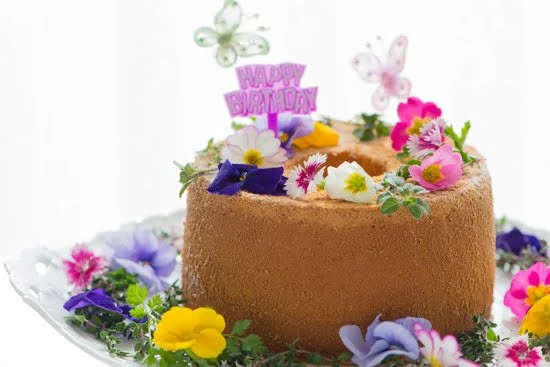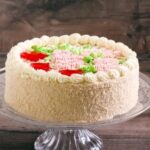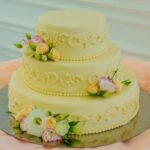Rasmalai cake decoration holds a unique charm that captures the essence of a traditional Indian delicacy paired with artistic cake decorating skills. The fusion of these two elements creates a visually stunning and delectable masterpiece that is sure to impress. In this article, we will delve into the world of Rasmalai cake decoration, exploring its origins, perfecting the base, elevating the aesthetic, and incorporating both traditional and modern garnishing techniques.
Rasmalai, an iconic Indian dessert made with soft cottage cheese dumplings soaked in sweet creamy milk infused with saffron and cardamom flavors, has been enjoyed for centuries. This timeless treat has paved the way for creative interpretations, one of which being the Rasmalai cake. By blending the flavors and textures of Rasmalai with the artistry of cake decorating, enthusiasts can create an enticing dessert that is as pleasing to the eyes as it is to the palate.
The key to achieving a truly exceptional Rasmalai cake lies in perfecting the base. We will provide you with a step-by-step guide to baking a fluffy and moist cake that serves as a solid foundation for your decorative endeavors.
From there, we explore creative decoration ideas – from incorporating traditional garnishes such as pistachios and rose petals to experimenting with contemporary techniques like fondant molding and edible paint. With expert tips and tricks along the way, you’ll learn how to achieve a professional-looking Rasmalai cake that embodies both tradition and innovation.
Whether you’re looking to showcase your Rasmalai masterpiece at a special occasion or simply want to capture its beauty on social media, we’ve got you covered. In this article, we’ll share styling and display ideas to make your creation truly showstopping. Additionally, we’ll provide tips for photographing your Rasmalai cake decoration so that you can beautifully document your culinary artistry.
Join us on a journey that celebrates the fusion of a beloved Indian delicacy with the world of cake decorating. Let’s explore the charm, creativity, and artistry behind Rasmalai cake decoration, and learn how to create a dessert that not only satisfies your sweet tooth but also showcases your passion for both culinary and visual delights.
The Origins of Rasmalai
Rasmalai, a delectable Indian dessert, holds a cherished place in Indian cuisine. This creamy and mouthwatering sweet treat has a fascinating history that dates back centuries. Tracing its roots helps us appreciate the cultural significance and traditional techniques behind this iconic dish.
Originating from Bengal, Rasmalai is believed to have been created during the Mughal era, when Persian influences were prevalent in Indian cuisine. The name “Rasmalai” itself is derived from two words – “ras,” which means juice or syrup, and “malai,” referring to cream. These two elements form the essence of Rasmalai – soft cheese dumplings soaked in rich and sweetened milk.
The process of making Rasmalai involves curdling milk to obtain chenna (cottage cheese), which is then kneaded into smooth dumplings. These dumplings are then cooked in a creamy milk syrup flavored with cardamom, saffron, and sometimes rose water. Traditionally served chilled, Rasmalai is enjoyed as a refreshing dessert during festivals, weddings, and special occasions.
To better understand the origins of Rasmalai and its cultural significance, let’s delve into some historical context. During the Mughal period in India (16th-19th centuries), art and culinary exchanges between Persia (Iran) and India flourished under Mughal emperors like Akbar the Great. It was during this time that Persian-inspired desserts like Rasgulla (from which Rasmalai evolved) gained popularity in Bengal.
While there are different versions of Rasmalai across regions in India today, it remains an integral part of Bengali cuisine and has spread its delicious influence across the country and beyond. Now, let’s move on to explore the step-by-step process of baking the perfect Rasmalai cake base.
| Origin | Mughal Era (16th-19th centuries) |
|---|---|
| Name | Rasmalai – “ras” for syrup, “malai” for cream |
| Ingredients | Curdled milk, cottage cheese, cardamom, saffron, rose water |
| Serving Style | Chilled as a dessert for festivals and special occasions |
Perfecting the Rasmalai Base
The key to creating a delectable Rasmalai cake lies in perfecting the base, which is the fluffy and moist cake itself. Follow this step-by-step guide to ensure that your Rasmalai cake turns out light, airy, and full of flavor.
First, gather all the necessary ingredients for the cake batter. You will need all-purpose flour, baking powder, baking soda, salt, unsalted butter, sugar, eggs (or substitutes for vegan options), vanilla extract, and milk (or non-dairy alternatives). Make sure all your ingredients are at room temperature for optimal results.
In a large mixing bowl, cream together the butter and sugar until light and fluffy. This can be done using an electric mixer or by hand with a whisk. Then add in the eggs one at a time, mixing well after each addition. Next, add in the vanilla extract and mix until well combined.
In a separate bowl, whisk together the dry ingredients – all-purpose flour, baking powder, baking soda, and salt. Gradually add the dry mixture into the wet mixture while alternating with milk. Begin and end with the dry ingredients to ensure proper incorporation.
Once all the ingredients are well combined and there are no lumps in the batter, it’s time to bake the cake. Preheat your oven to 350°F (175°C) and grease your cake pans. Divide the batter equally between them.
Bake in the preheated oven for approximately 25-30 minutes or until a toothpick inserted into the center comes out clean. Allow the cakes to cool completely before removing them from their pans.
With this foolproof recipe for a fluffy Rasmalai cake base ready to go, you can now move on to exploring creative decoration ideas that will take your masterpiece to another level.
Elevating the Aesthetic
Rasmalai Cake Decoration allows for endless creativity and imagination. In this section, we will explore some innovative and unique ideas to elevate the aesthetic of your Rasmalai Cake. From floral designs to intricate patterns, these creative decoration ideas will take your Rasmalai cake to the next level.
One popular decoration idea is to use edible flowers. Fresh flowers can be used as a beautiful and natural adornment on top of the cake. Choose flowers that are clean and pesticide-free, such as roses, marigolds, or pansies. These vibrant blooms will not only add color to your cake but also provide a delightful fragrance.
Another creative approach is to incorporate traditional Indian motifs into the design. For example, you can decorate your Rasmalai Cake with henna-inspired patterns using edible ink or piping gel. These intricate designs will pay homage to the rich culture and heritage of India while adding an artistic touch to your cake.
If you want to create a visually stunning effect, consider using gold leaf or edible metallic paints. This luxurious touch will give your Rasmalai Cake a regal appearance, making it perfect for special occasions like weddings or festivals.
To summarize the creative Rasmalai Cake Decoration ideas:
- Edible flowers: Incorporate fresh and pesticide-free flowers for a natural aesthetic.
- Traditional Indian motifs: Use henna-inspired patterns or other cultural symbols.
- Gold leaf and metallic paints: Add a luxurious touch for an opulent appearance.
By bringing together traditional elements with modern techniques, you can create a visually striking Rasmalai Cake that is both delicious and visually captivating. The possibilities are endless when it comes to decorating this fusion dessert masterpiece.
Traditional Rasmalai Garnishes
When it comes to decorating a Rasmalai cake, traditional garnishes play a crucial role in adding authenticity and enhancing the overall flavor profile. These classic elements not only contribute to the visual appeal of the cake but also provide a burst of traditional flavors that complement the Rasmalai base. In this section, we will explore some traditional Rasmalai garnishes that you can incorporate into your cake decoration for an authentic touch.
1. Saffron Strands:
Saffron is one of the most prized spices in Indian cuisine, known for its vibrant color and distinct aroma. To give your Rasmalai cake a touch of luxury and elegance, consider decorating it with delicate saffron strands. You can sprinkle them on top of the cake or place them strategically around the edges to create a visually appealing pattern.
2. Pistachios:
Pistachios are often used as garnishes in Indian desserts due to their crunchy texture and subtle nutty flavor. Crushed or finely chopped pistachios can be sprinkled generously over the Rasmalai cake to add a pop of green color and provide a satisfying crunch with each bite.
3. Rose Petals:
Rose petals not only add beauty to any dessert but also infuse it with a subtle floral fragrance. For an extra touch of elegance and an authentic Indian vibe, sprinkle dried rose petals on top of your Rasmalai cake. You can scatter them all over the surface or arrange them in a decorative pattern to create an eye-catching design.
4. Silver Leaf (Varak):
In Indian sweets, silver leaf or Varak is often used as a garnish to signify celebration and festivity. Applying silver leaf on your Rasmalai cake imparts a luxurious look and elevates its appearance instantly. Carefully lay the edible silver leaf on top of the cake, ensuring a smooth and even distribution.
Remember, when incorporating these traditional garnishes, it is important to strike a balance between aesthetics and taste. Each garnish should complement the flavors of the Rasmalai cake while enhancing its presentation. Experiment with different combinations and arrangements to find the perfect balance that suits your personal preferences and showcases the essence of this iconic Indian dessert.
Adding a Modern Twist
Exploring Abstract Designs
One way to add a modern twist to your Rasmalai cake decoration is by experimenting with abstract designs. Instead of adhering strictly to traditional patterns and motifs, you can play with bold and unconventional shapes and lines. Think asymmetrical patterns, geometric shapes, or even free-form designs that allow you to express your creativity. Consider using different tools such as stencils, food-grade paintbrushes, or even edible spray paints to create unique abstract elements on your cake.
Texture Play
Another contemporary technique you can try is texture play. Experiment with different textures on your Rasmalai cake to make it visually interesting and appealing. You can use techniques like ruffles, rosettes, or brushstroke textures created using buttercream frosting. Adding layers of textured elements not only elevates the aesthetic appeal but also adds depth and dimension to your cake design. Don’t be afraid to mix different textures together for a visually stunning result.
Mixing Colors and Flavors
Incorporating vibrant colors and unconventional flavor combinations is another way to give a modern twist to your Rasmalai cake decoration. Break away from the traditional color palette of whites, pastels, and golds, and experiment with bolder hues like deep blues or rich purples.
Consider incorporating flavors like matcha or pandan into your cake batter or frosting for an unexpected taste experience. By mixing colors and flavors creatively, you can create a visually striking and deliciously unique Rasmalai cake that stands out from the crowd.
Remember, while experimenting with contemporary cake decorating techniques is exciting, it’s essential to strike the right balance between tradition and innovation. Make sure the core essence of Rasmalai is still present in the final product while adding your own creative flair through these modern techniques.
Expert Tips and Tricks
Rasmalai cakes are not only delicious but also visually stunning. To achieve a professional-looking Rasmalai cake, there are several expert tips and tricks that can elevate your decorating skills to the next level.
- Opt for a sturdy base: When it comes to Rasmalai cake decoration, the base plays a crucial role in maintaining the structure of the cake. To ensure stability, choose a dense and moist cake such as sponge or chiffon. These types of cakes have enough strength to support the weight of the Rasmalai elements without collapsing.
- Level your cake layers: One key aspect of achieving a professional-looking Rasmalai cake is ensuring even layers. Use a serrated knife or a cake leveler to carefully slice off any domed tops and create flat surfaces for each layer. This will provide stability and give your final presentation a polished look.
- Soak your cake layers: To infuse your Rasmalai flavors throughout the entire cake, soak each layer with flavored syrup before assembling them. Traditional flavors like saffron and cardamom can be incorporated into simple syrup or milk mixture for this purpose. Make sure not to over-soak the layers, as it can make the cake soggy.
- Crumb coat before final icing: A crumb coat is an essential step in achieving a flawless finish for your Rasmalai cake. Apply a thin layer of buttercream frosting all over the assembled cake with a spatula, sealing in any loose crumbs on the surface. This initial coat acts as a base for the final icing and ensures smooth edges on your finished product.
- Experiment with decorative piping: Piping techniques can add elegance and intricacy to your Rasmalai cake design. Consider using different piping tips to create various designs such as rosettes, ruffles, or lace patterns with buttercream or whipped cream frosting.
- Arrange Rasmalai pieces strategically: Rasmalai is the star of the cake, so it’s important to arrange the pieces strategically for maximum visual impact. Place Rasmalai balls or discs on top of your cake in a visually pleasing pattern, considering size, shape, and color distribution. This will enhance the overall look and make your cake more appealing.
By incorporating these expert tips and tricks into your Rasmalai cake decoration process, you can achieve a professional-looking cake that not only tastes amazing but also impresses with its visual appeal. Remember to have fun and let your creativity shine through as you experiment with different techniques and designs.
Showstopping Presentation
When it comes to showcasing your Rasmalai cake masterpiece, the presentation is just as important as the taste. A well-styled and beautifully displayed cake can truly be a showstopper at any event or celebration. In this section, we will explore some creative styling and display ideas that will elevate your Rasmalai cake to the next level.
One popular idea for styling your Rasmalai cake is to create a tiered cake display. This involves stacking multiple layers of cakes on top of one another, with each layer featuring a different element of the Rasmalai theme.
For example, you could have one layer that is decorated with saffron-infused cream cheese frosting and garnished with pistachios, while another layer could be adorned with strands of saffron and rose petals. This tiered approach not only adds visual interest but also allows your guests to appreciate the various flavors and textures of the Rasmalai cake.
Another great way to showcase your Rasmalai cake is by creating a dessert table or buffet. This allows you to create a visually stunning display by incorporating other traditional Indian desserts alongside your cake.
Consider including bowls of fresh fruits like mangoes and lychees, plates of mithais (Indian sweets), and small cups filled with kheer or falooda. Arrange these items in an aesthetically pleasing manner, ensuring there is enough space between each item so that they can all be appreciated individually.
If you want to take your presentation up a notch, consider incorporating decorative elements that reflect the cultural significance of Rasmalai. For instance, you could use colorful Indian textiles or fabrics as table runners or backdrops. Additionally, you may want to incorporate traditional Indian artwork or figurines as part of the display. These elements not only enhance the visual appeal but also help tell the story behind this iconic Indian dessert.
Capturing the Experience
In this digital age, sharing our culinary creations on social media has become a popular trend. When it comes to Rasmalai cake decoration, capturing the experience through photography not only allows us to showcase our talent but also inspires others to try their hand at this delicious fusion dessert. In this section, we will explore some tips and tricks for photographing your Rasmalai cake decoration for social media.
Lighting plays a crucial role in food photography, and the same goes for capturing the essence of your beautifully decorated Rasmalai cake. Natural light is often recommended as it brings out the colors and textures of the dessert in an appealing way. If possible, position your cake near a window or shoot outdoors during the day to take advantage of soft and diffused light.
Another important aspect to consider is composition. Experiment with different angles and perspectives to create visually interesting shots. Play around with angles that capture layers and textures, such as a top-down shot showcasing the intricate details of the Rasmalai cake or a close-up image highlighting the delicate garnishes. Additionally, using props like traditional Indian tableware or utensils can add an extra touch of authenticity to your photographs.
When it comes to editing your photographs, remember that less is more. Use editing tools sparingly to enhance the natural beauty of your Rasmalai cake rather than altering its appearance completely. Adjustments in brightness, contrast, and saturation can help make your dessert pop without compromising its authenticity.
By following these tips for photographing your Rasmalai cake decoration for social media, you can captivate your audience with stunning visuals that do justice to your creative masterpiece. Remember that each click should tell a story – one that showcases the fusion of traditional Indian delicacy and artistic cake decorating skills in a visually captivating manner.
Conclusion
In conclusion, the art of Rasmalai cake decoration not only celebrates the fusion of a traditional Indian delicacy with artistic cake decorating skills but also represents the rich cultural heritage and creativity of India. From tracing the origins of Rasmalai to perfecting the base and exploring creative decoration ideas, this article has provided a comprehensive guide for creating a showstopping Rasmalai cake.
By incorporating traditional Rasmalai garnishes, such as saffron strands and chopped pistachios, one can add an authentic touch to the cake. However, for those looking to experiment with contemporary cake decorating techniques, there are endless possibilities. From intricate fondant designs to hand-painted motifs, the options are limitless when it comes to adding a modern twist to the Rasmalai cake.
Throughout this article, expert tips and tricks have been shared to help readers achieve professional-looking results. Whether it’s ensuring the fluffiest cake texture or achieving a flawless finish on the frosting, these insights are invaluable in mastering the art of Rasmalai cake decoration.
Finally, while creating a visually stunning Rasmalai cake is important, so is capturing its beauty through photography. With social media platforms becoming ever more popular for sharing culinary creations, tips for photographing your Rasmalai cake have been provided to ensure that you showcase your masterpiece in the best possible light.
Overall, by combining skillful baking techniques with creative decoration ideas and capturing it all through photography, one can truly celebrate the fusion of traditional Indian cuisine and artistic cake decorating skills with a stunning Rasmalai cake. Whether enjoyed at family gatherings or featured on social media feeds, this unique dessert will surely leave an everlasting impression on anyone who experiences it.
Frequently Asked Questions
What is rasmalai cake made of?
Rasmalai cake is made of a flavorful combination of traditional Indian rasmalai and cake. Rasmalai, a popular sweet in South Asia, consists of soft cheese dumplings soaked in saffron-infused milk, flavored with cardamom and garnished with pistachios or almonds. The cake layers are usually made of a moist sponge cake infused with milk syrup or condensed milk.
Sometimes, the rasmalai mixture is also used as a filling between the layers to enhance the flavor further. Overall, rasmalai cake combines the richness of Indian desserts with the lightness and sponginess of cakes.
Is rasmalai cake good?
For those who appreciate the unique flavors of Indian sweets and cakes, rasmalai cake can be an absolute delight. It offers a fusion of two beloved desserts that complement each other well. The creamy, milky texture and flavor of rasmalai blends harmoniously with the soft and fluffy nature of cake layers.
The sweetness from the condensed milk or syrup adds an indulgent touch to every bite. However, individual taste preferences may vary, as it can be quite rich and creamy for some people’s liking.
What is the decoration on cake called?
The decoration on a cake is known as icing or frosting. Icing serves both aesthetic and practical purposes in cake decoration.
It can be made from various ingredients such as buttercream, cream cheese, fondant, ganache, or royal icing, each providing different textures and flavors to enhance the overall presentation of the cake. Icing can be spread smoothly over the surface of the cake for a polished look or piped into intricate designs using piping bags and nozzles to create patterns or decorations like flowers, leaves, borders, or lettering on top of the cake.

Welcome to our cake decorating blog! My name is Destiny Flores, and I am the proud owner of a cake decorating business named Cake Karma. Our mission is to provide delicious, beautiful cakes for all occasions. We specialize in creating custom cakes that are tailored specifically to each customer’s individual needs and tastes.





